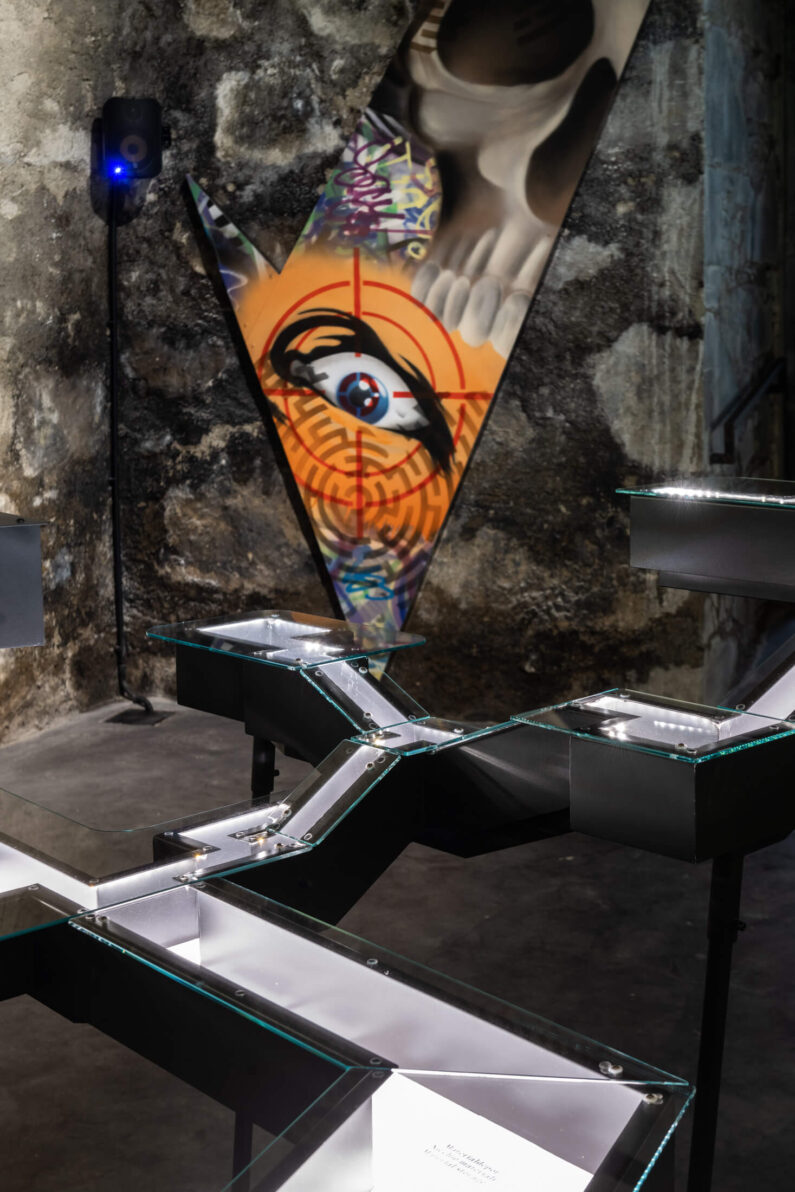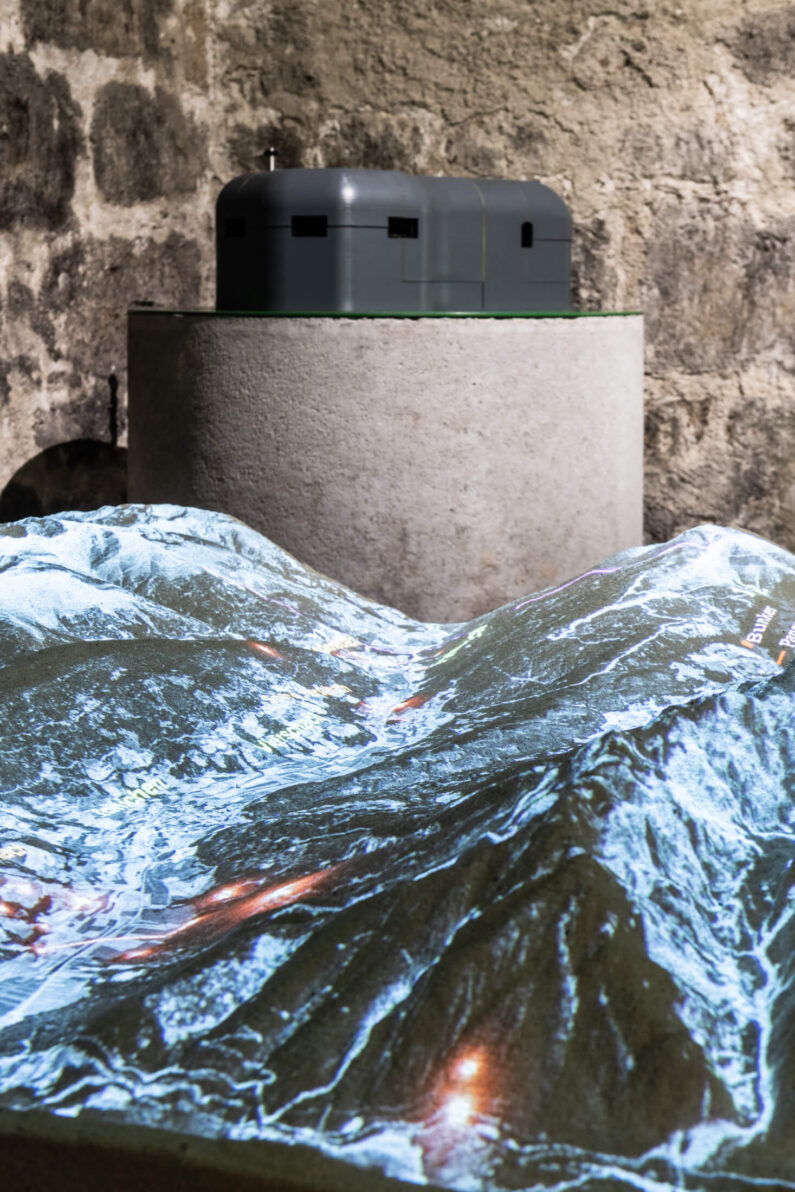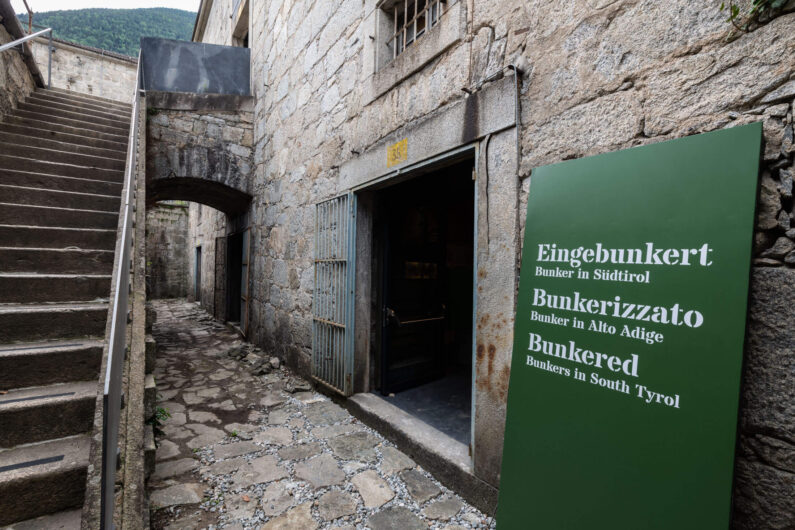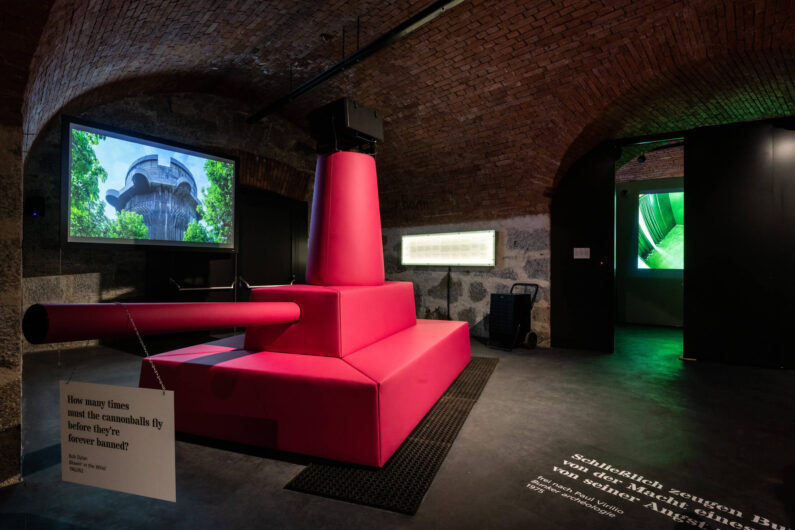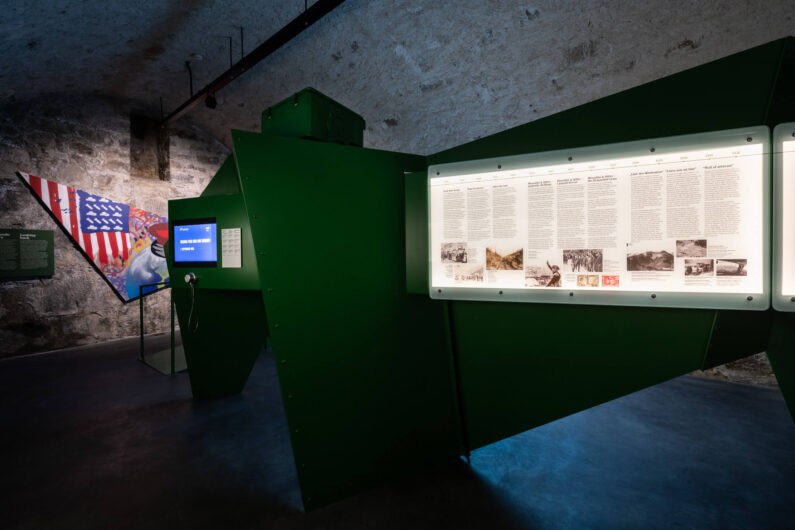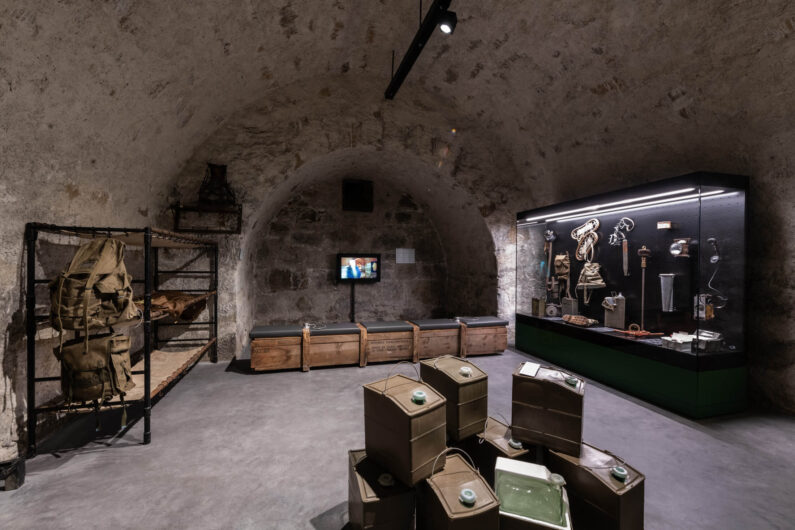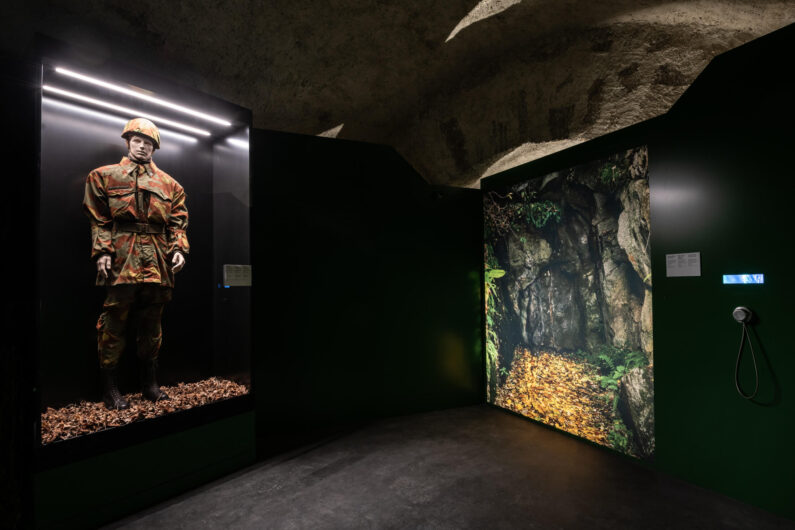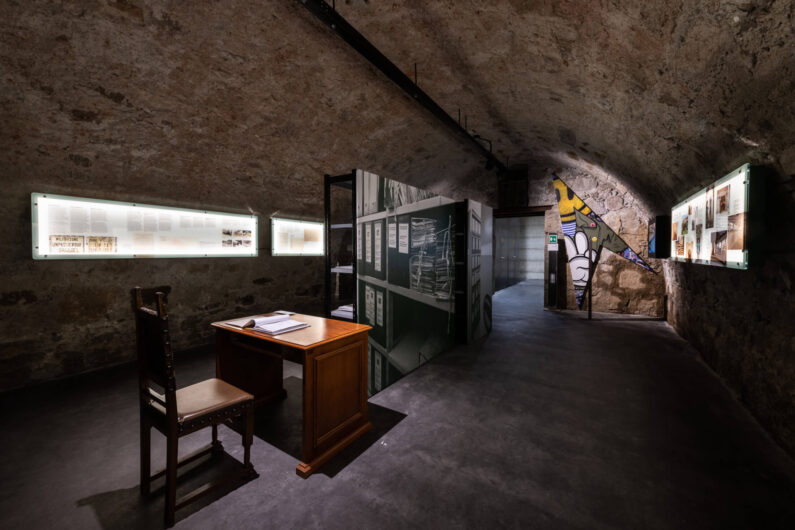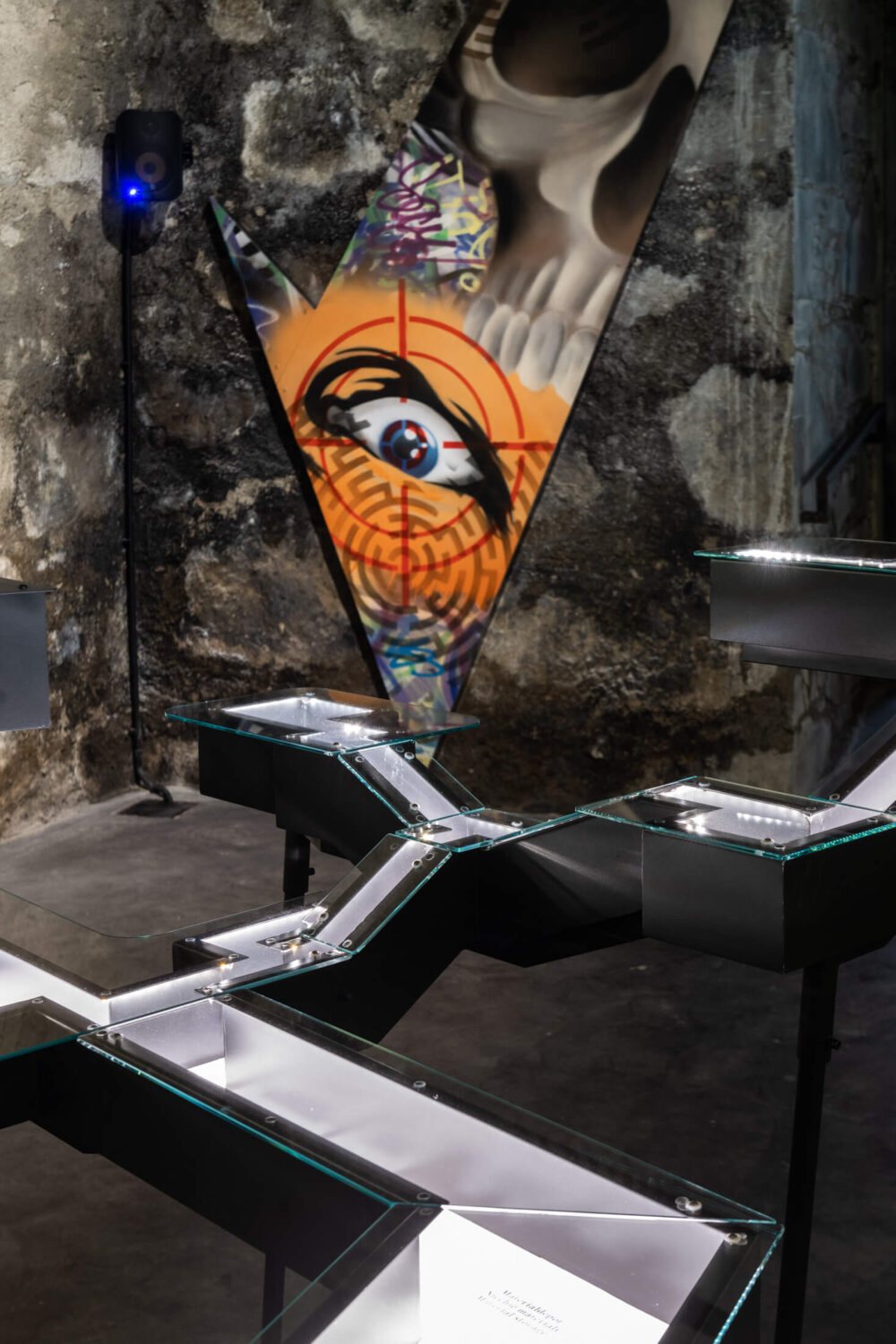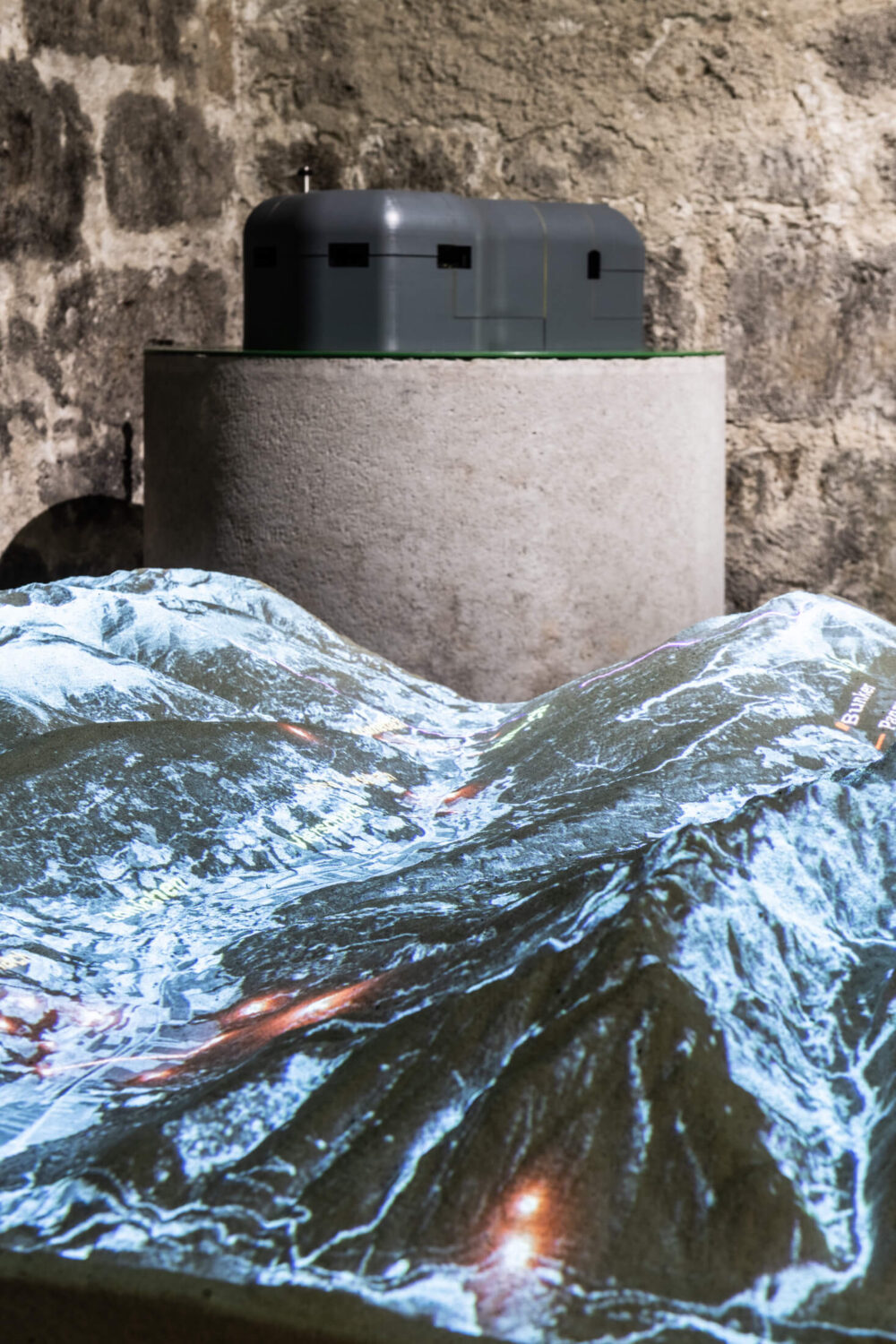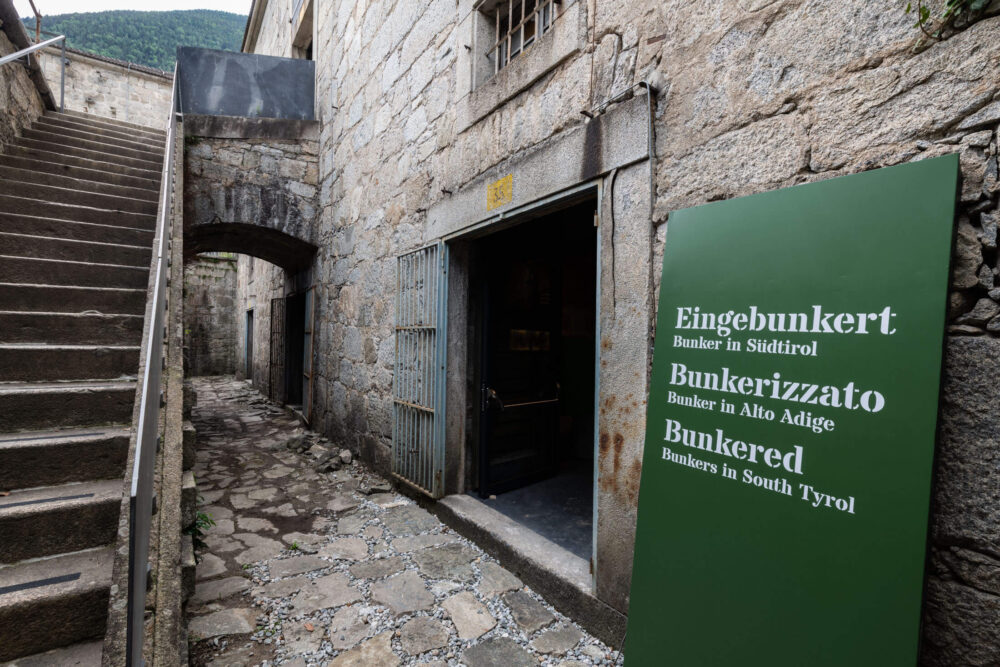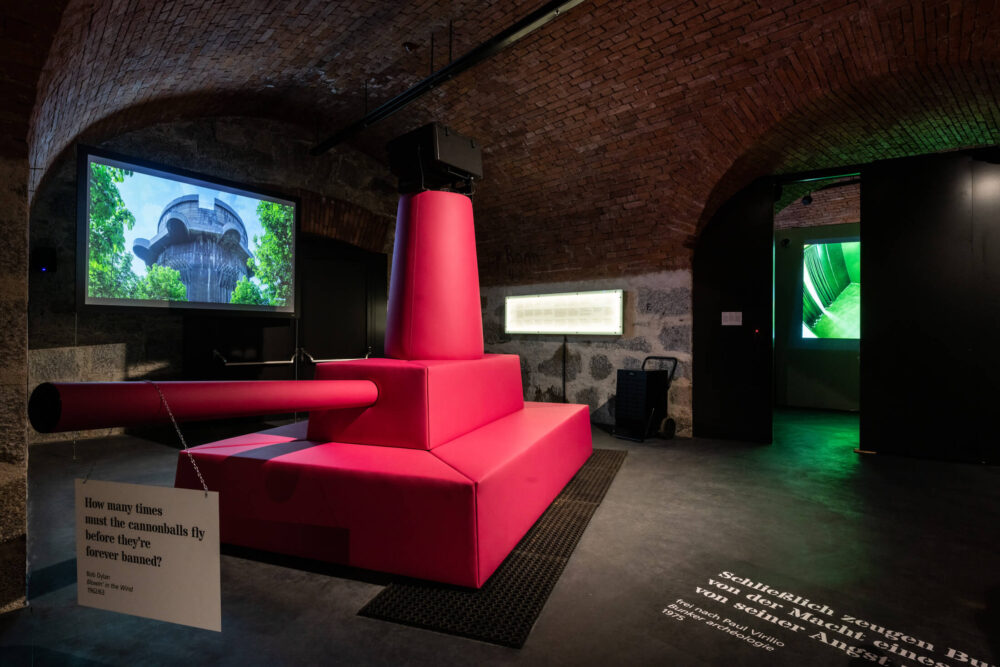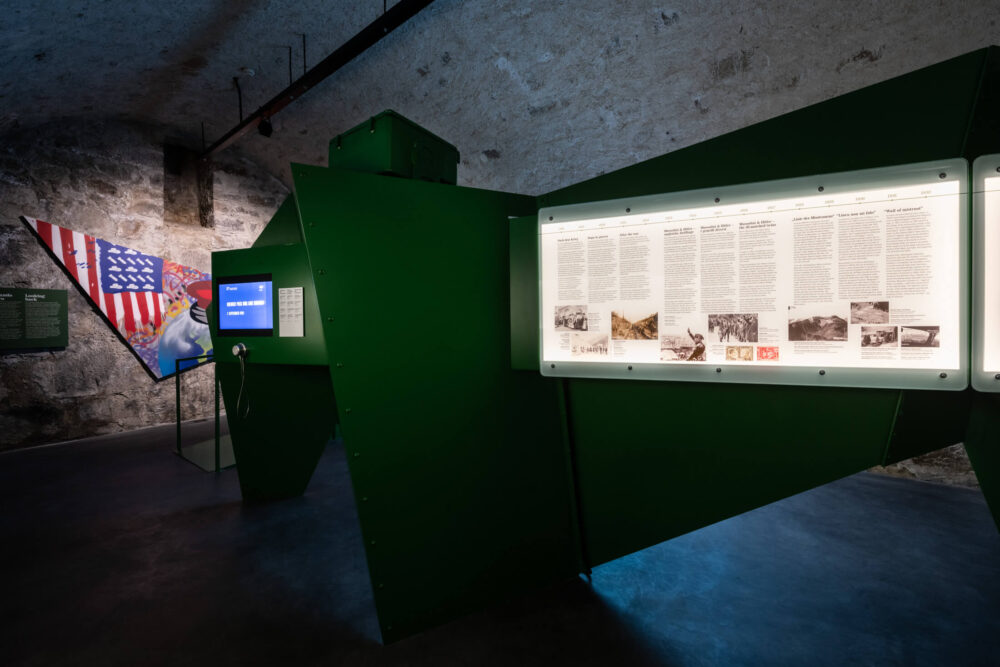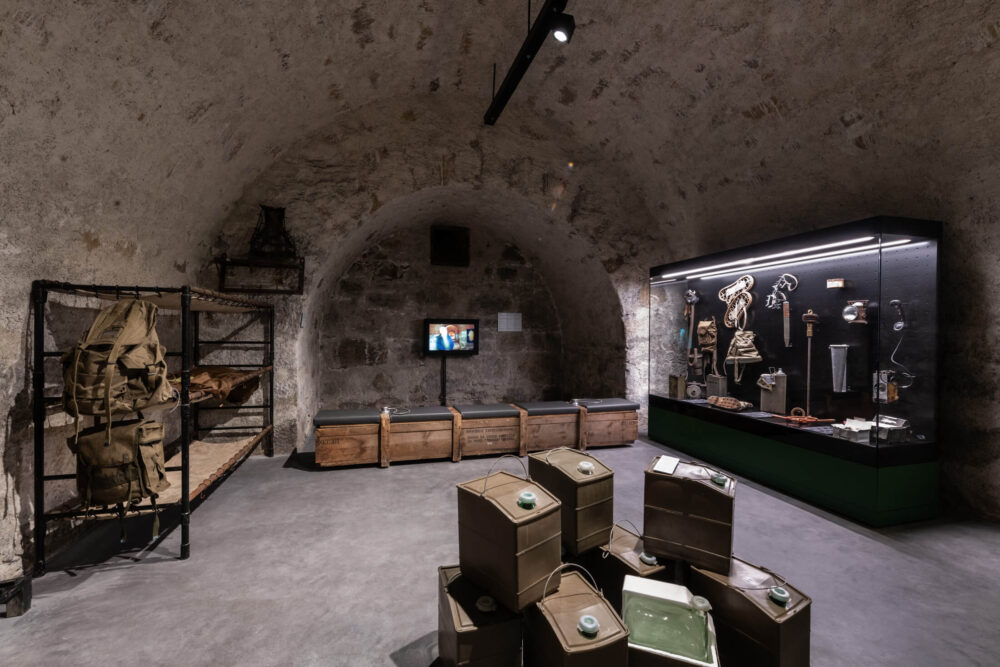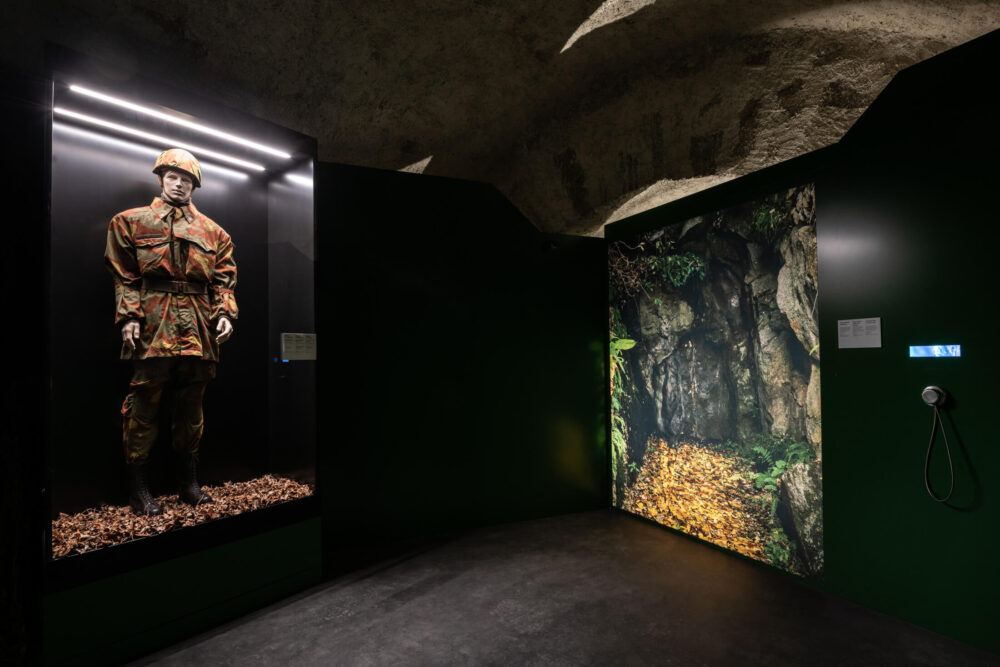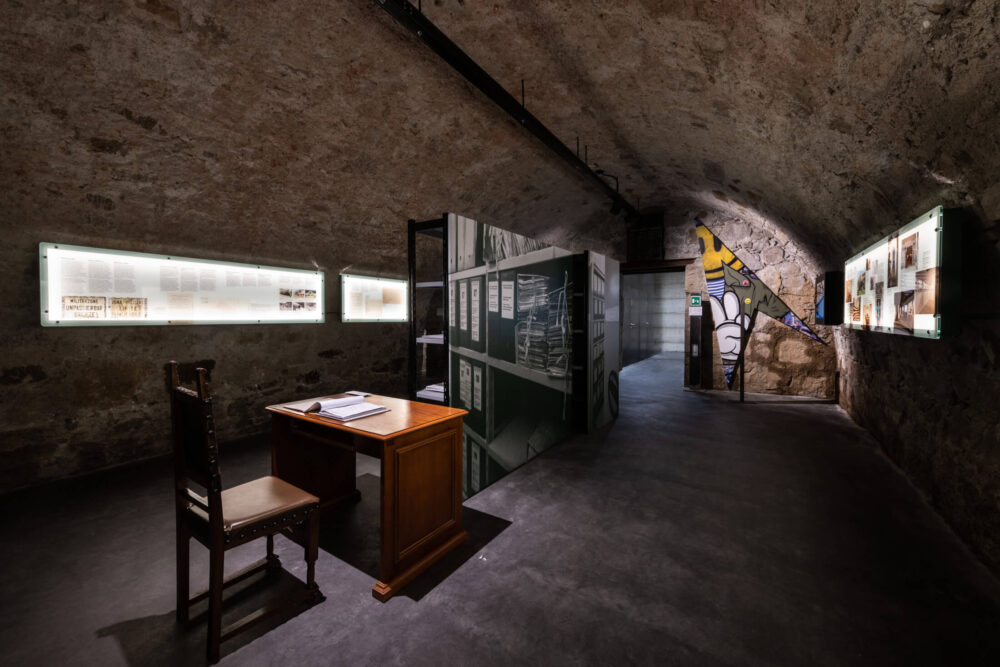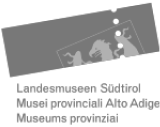Bunkerd. Bunker in South Tyrol
Time period
from 24. April 2025
Location
Buildings 37 & 38
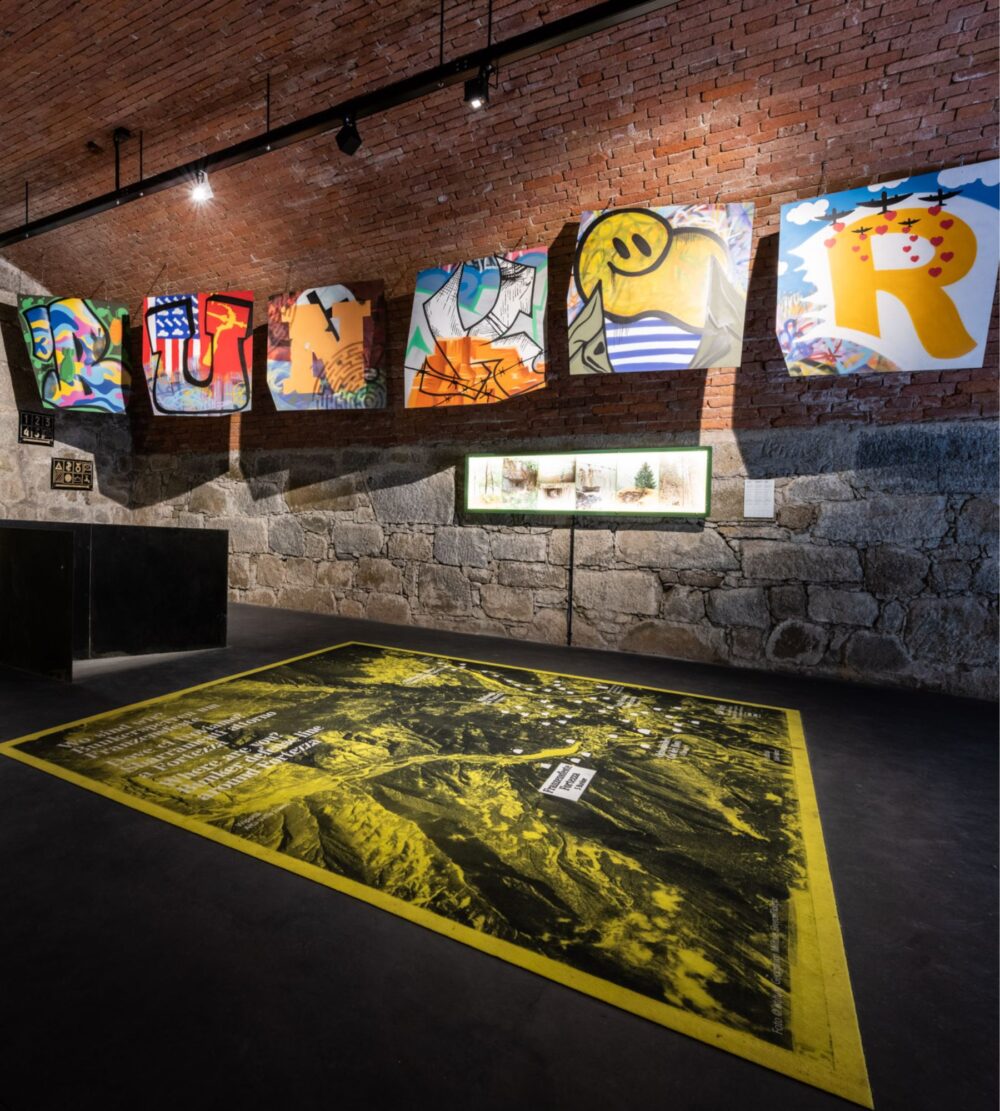
The permanent exhibition on bunkers in South Tyrol focuses on the Alpine Wall, which was built in the 1930s and 1940s. It ran through the entire Alpine arc and has over 300 bunkers in South Tyrol alone, five of which are located in Franzensfeste. The Alpine Wall was never completed. However, some of the bunkers were reactivated during the Cold War and expanded in the event of an invasion from the East.
‘Linea non mi fido’ was the popular nickname for it. The defence apparatus set up by Mussolini, out of mistrust of his ally Hitler, provided for the construction of almost 800 bunkers in South Tyrol alone; just over 300 were completed in shell form, with a further 150 remaining as construction sites. What role did these buildings fulfil strategically? How were they equipped, how were they maintained? And what would have happened there in an emergency?
Starting with the fortress as a defence structure, the exhibition, which is divided into eight rooms, spans an arc to Bunker No. 3, to the other defence structures in the immediate vicinity and finally to the bunker world in South Tyrol. In this way, it conveys the complex international interdependencies of fascism, National Socialism, armament and war. It also aims to shed light on the hidden defence structures and their historical and political background as well as the technical requirements for the construction of the bunkers and emphasise the value of peaceful coexistence.
The exhibition includes a faithful reproduction of Bunker No. 3, a chronology of the local bunker history as well as artefacts, photos and texts, infographics, documents and videos that answer the following questions: How did people live in the bunker? How were people equipped in the event of an attack? How did soldiers carry out military exercises in the bunker? What did they eat, where did they sleep? How did they communicate with the outside world? But also: How did the expropriation of private property for military purposes in the 1930s and 1940s, the transfer of ownership from the state domain to the state in 1999 and the sale of bunkers to private individuals take place? And what happens in the bunkers today? What are they used for? The crowning glory of the exhibition is a rocket developed in 1950, over eight metres long and weighing two tonnes, which could be fired up to 48 kilometres. Conventional, chemical and nuclear warheads could be mounted on it. It is located in the last exhibition room, the door of which can only be opened with a code; this is the solution to a puzzle that visitors have to uncover in the exhibition.
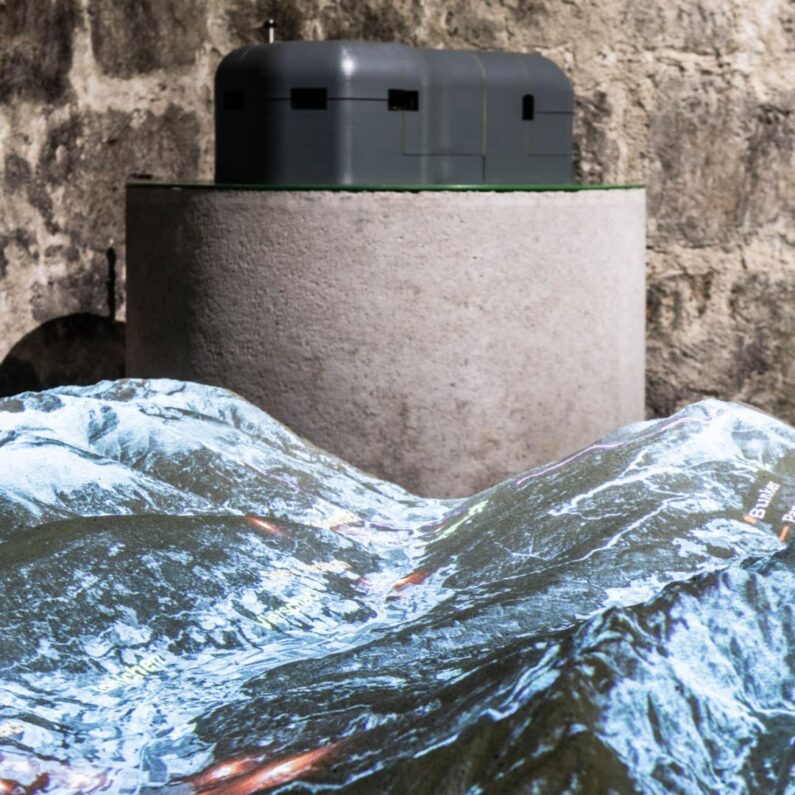
Potos: Ivo Corrà
